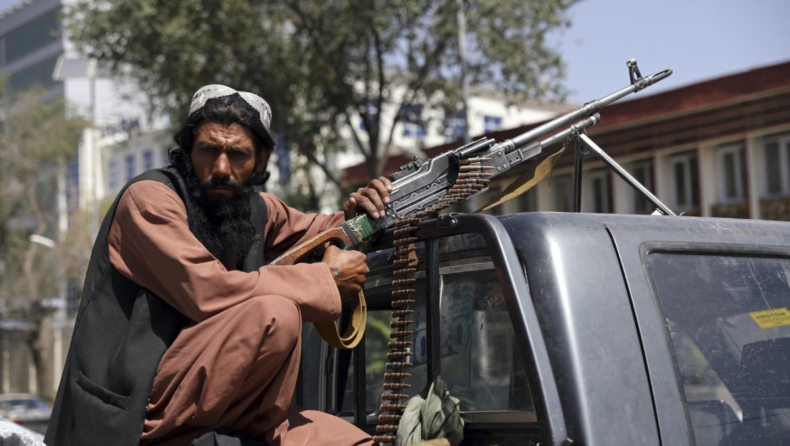Ayman al-Zawahiri, the leader of Al Qaeda, was killed by an American drone strike in downtown Kabul. It took the Taliban security forces only a few hours to block off the area. Green tarps were put over windows that were broken. There were checkpoints set up, and shops were shut down.

But there was no way to hide the damage that had been done to the Taliban’s new government, which had tried to hide the world’s most wanted terrorist from the eyes of the American government.
The attack early on Sunday morning and the public’s discovery that the Taliban had hidden a key 9/11 plotter in the heart of the Afghan capital was a turning point for the group’s new government. And it showed that the Taliban haven’t changed much since their first rule in the 1990s, when the country became known as a pariah state because of their hardline policies and ties to Al Qaeda.
In 2001, the US invaded Afghanistan in retaliation for Al Qaeda and its Taliban allies, beginning a two-decade war that devastated the country. Now, the Taliban seem to be following the same path, fueling criticism that their government should never be recognized and raising questions about a new era of U.S. strikes in Afghanistan.
Taliban condemn American strike without mentioning al-Zawahiri or Al Qaeda. A Taliban spokesman called it an act against Afghanistan and the region. Repetition will harm opportunities.
The Taliban are already vulnerable. Since seizing power, the group has promised to moderate as it seeks international recognition and aid from Western diplomats, while remaining true to its hardline ideologies at home.
In recent months, the government has restricted women’s travel and work rights. It reneged on a promise to let girls attend secondary school, echoing its first rule.
These actions have made more and more people around the world dislike the government. They have also cost the country millions of dollars in foreign aid, making its already bad economic situation even worse. Now, the attack on Al Qaeda’s leader in the center of Kabul has opened a new chapter for the Taliban government and seems to have made it even harder for the country to get help from other countries.
The strike highlights what many analysts and experts have warned for months: the Taliban have allowed Al Qaeda and the Pakistani Taliban to exist freely on Afghan soil since the takeover, despite an agreement with the U.S
“No one is surprised that the Taliban is playing footsie with Al Qaeda, and no one is surprised that the U.S. hit him with a drone”, says Afghanistan expert Graeme Smith.
“Over the horizon” strikes could become a viable option for dealing with Afghanistan’s complex threats, he said. Afghanistan has a long history of unintended airstrikes.
Sunday’s strike marks the first use of the Pentagon’s “over the horizon” strategy in Afghanistan, in which aircraft based outside the country attack targets.
After the U.S. left Afghanistan last year, American leaders have moved to put American forces in countries nearby where they can launch attacks like the one on al-Zawahiri. This strategy is still in its early stages, and talks about putting forces in Uzbekistan, Tajikistan, and Pakistan are still in their early stages.
It’s unclear if the strike over the weekend will be the first of many or a one-off.
Mr. Smith said the strike doesn’t tell us much about the over-the-horizon strategy because al-Zawahiri was a big enough fish to go after regardless of policy.
Many Afghans in Kabul feared a return to American military intervention after a year of relative peace since the U.S. troop withdrawal and end of the two-decade war.
American officials said only al-Zawahiri was killed in the weekend strike. In the chaotic final days of its withdrawal in August 2021, the US killed 10 civilians in Kabul with a drone strike based on bad information. American officials only acknowledged the error after The New York Times reported it.
During the U.S. war in Afghanistan, American forces periodically killed Qaeda leaders in Afghanistan, despite the group being mostly driven out of the country or into hiding along the Pakistani border.
Recent years saw a larger return to Afghanistan. In 2015, U.S. and Afghan commandos, backed by American air support, attacked one of Al Qaeda’s largest training camps. One camp covered 30 square miles, and hundreds of Qaeda fighters were killed or injured, U.S. officials said.
Afghan government forces killed a senior Qaeda leader under Taliban protection in southeastern Afghanistan less than a year before the U.S. left in 2020. The raid showed that the Taliban had refused to sever ties with al-Qaeda despite Doha commitments. American troops still withdrew.
Now, following al-death Zawahiri’s at the hands of the United States, many are awaiting Al Qaeda and the Taliban’s determination of their relationship.
Ibraheem Bahiss, an analyst with Crisis Group’s Asia Program, commented, “It will be fascinating to see what happens next.” If Al Qaeda chooses a leader who is present in Afghanistan, the Taliban’s dilemma will not be resolved.













